 |
by Cassandra Willyard on (#6MAQ7)
A month ago, Richard Slayman became the first living person to receive a kidney transplant from a gene-edited pig. Now, a team of researchers from NYU Langone Health reports that Lisa Pisano, a 54-year-old woman from New Jersey, has become the second. Her new kidney has just a single genetic modification-an approach that researchers hope...
|
MIT Technology Review
| Link | https://www.technologyreview.com/ |
| Feed | https://www.technologyreview.com/stories.rss |
| Updated | 2025-12-18 20:47 |
 |
by Zeyi Yang on (#6MAMH)
Almost all keyboard apps used by Chinese people around the world share a security loophole that makes it possible to spy on what users are typing. The vulnerability, which allows the keystroke data that these apps send to the cloud to be intercepted, has existed for years and could have been exploited by cybercriminals and...
|
 |
by Rhiannon Williams on (#6MAAX)
This is today's edition ofThe Download,our weekday newsletter that provides a daily dose of what's going on in the world of technology. Introducing: the Build issue Building is a popular tech industry motif-especially in Silicon Valley, where Time to build" has become something of a call to arms. Yet the future is built brick by...
|
 |
by Zeyi Yang on (#6MA86)
This story first appeared in China Report, MIT Technology Review's newsletter about technology in China.Sign upto receive it in your inbox every Tuesday. I've wanted to learn more about the world of solar panels ever since I realized just how dominant Chinese companies have become in this field. Although much of the technology involved was...
|
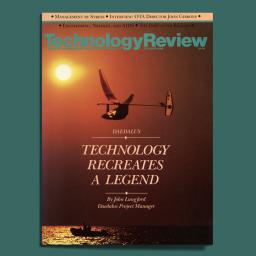 |
by Bill Gourgey on (#6MA67)
Today's climate-change kraken may have been unleashed by human activity-which has discharged greenhouse-gas emissions into Earth's atmosphere for centuries-but reversing course and taming nature's growing fury seems beyond human means, a quest only mythical heroes could fulfill. Yet the dream of human-powered flight-of rising over the Mediterranean fueled merely by the strength of mortal limbs-was...
|
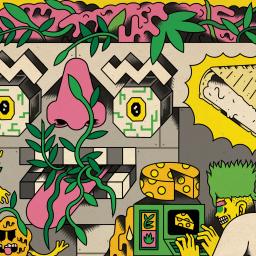 |
by Andrew Rosenblum on (#6MA6C)
As Climax Foods CEO Oliver Zahn serves up a plate of vegan brie, feta, and blue cheese in his offices in Emeryville, California, I'm keeping my expectations modest. Most vegan cheese falls into an edible uncanny valley full of discomforting not-quite-right versions of the real thing. But the brie I taste today is smooth, rich,...
|
 |
by Charlie Metcalfe on (#6MA6B)
The role of AI prompt engineer attracted attention for its high-six-figure salaries when it emerged in early 2023. Companies define it in different ways, but its principal aim is to help a company integrate AI into its operations. Danai Myrtzani of Sleed, a digital marketing agency in Greece, describes herself as more prompter than engineer....
|
 |
by Deb Chachra on (#6MA6A)
In 1856, Napoleon III commissioned a baby rattle for his newborn son, to be made from one of the most precious metals known at the time: light, silvery, and corrosion-resistant aluminum. Despite its abundance-it's the third most common element in Earth's crust-the metal wasn't isolated until 1824, and the complexity and cost of the process...
|
 |
by Matthew Ponsford on (#6MA69)
Some time before the first dinosaurs, two supercontinents, Laurasia and Gondwana, collided, forcing molten rock out from the depths of the Earth. As eons passed, the liquid rock cooled and geological forces carved this rocky fault line into Pico Sacro, a strange conical peak that sits like a wizard's hat near the northwestern corner of...
|
 |
by Mat Honan on (#6MA68)
One of the formative memories of my youth took place on a camping trip at an Alabama state park. My dad's friend brought an at-the-time gee-whiz gadget, a portable television, and we used it to watch the very first space shuttle launch from under the loblolly pines. It was thrilling. And it was hard not...
|
 |
by Allison Guy, SM ’23 on (#6M9TA)
For a harried wastewater manager, a commercial farmer, a factory owner, or anyone who might want to analyze dozens of water samples, and fast, it sounds almost miraculous. Light beamed from a central laser zips along fiber-optic cables and hits one of dozens of probes waiting at the edge of a field, or at the...
|
 |
by Sally Kornbluth on (#6M9T9)
When I last wrote, the Institute had just announced MIT's Climate Project. Now that it's underway, I'd like to tell you a bit more about how we came to launch this ambitious new enterprise. In the fall of 2022, as soon as I accepted the president's job at MIT, several of my oldest friends spontaneously...
|
 |
by Runako Gentles ’24 on (#6M9T8)
As an international student at MIT, I find that the privileges I've experienced in the States have made me even more conscious of my nation's struggles. Brief visits home remind me that in Jamaica, I can't always count on what I often take for granted in Massachusetts: water flowing through the faucet, timely public transportation,...
|
 |
by MIT News Staff on (#6M9T7)
Alumni leave MIT armed with knowledge and a whole lot of memories. During Tech Reunions in 2023, the MIT Alumni Association asked returning alums what else they had held onto since leaving campus. Here are just a few of their responses. Check out the recent MIT alumni video about physical objects grads have kept-and why...
|
by Dan Guzy, MechE ’75 on (#6M9T6)
In the spring of 1974, I was new to both MIT and rugby football. As a Course 2 graduate student, I shared a basement office with several other students, including two players on the Tech rugby club who encouraged me to join them. Being both an Anglophile and a beer drinker, I was pretty easily...
 |
by Peter Dizikes on (#6M9T5)
A county-by-county analysis by MIT researchers shows the places in the US that stand to see the biggest economic changes from the switch to cleaner energy because their job markets are most closely linked to fossil fuels. While many of those places have intensive drilling and mining operations, the researchers find, areas that rely on...
|
 |
by Anne Trafton on (#6M9T4)
One of the immune system's roles is to detect and kill cells that have acquired cancerous mutations. However, some early-stage cancer cells manage to survive. A new study on colon cancer from MIT and the Dana-Farber Cancer Institute has identified one reason why: they turn on a gene called SOX17, which renders them essentially invisible...
|
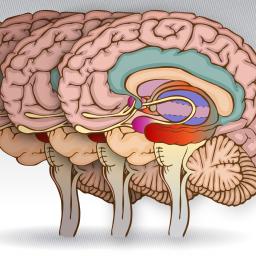 |
by Peter Dizikes on (#6M9T3)
Older people with mild cognitive impairment, especially when characterized by episodic memory loss, are at increased risk for dementia due to Alzheimer's disease. Now a study by researchers from MIT, Cornell, and Massachusetts General Hospital has identified a key deficit unrelated to memory that may help reveal the condition early-when any available treatments are likely...
|
 |
by Zeyi Yang on (#6M9GX)
Whenever you see a solar panel, most parts of it probably come from China. The US invented the technology and once dominated its production, but over the past two decades, government subsidies and low costs in China have led most of the solar manufacturing supply chain to be concentrated there. The country will soon be...
|
 |
by Rhiannon Williams on (#6M9B3)
This is today's edition ofThe Download,our weekday newsletter that provides a daily dose of what's going on in the world of technology. Why new proposals to restrict geoengineering are misguided -Daniele Visioni is a climate scientist and assistant professor at Cornell University The public debate over whether we should consider intentionally altering the climate system...
|
 |
by Daniele Visioni on (#6M98N)
The public debate over whether we should consider intentionally altering the climate system is heating up, as the dangers of climate instability rise and more groups look to study technologies that could cool the planet. Such interventions, commonly known as solar geoengineering, may include releasing sulfur dioxide in the stratosphere to cast away more sunlight,...
|
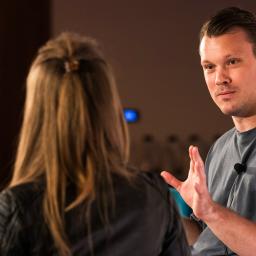 |
by Melissa Heikkilä on (#6M98P)
This story originally appeared in The Algorithm, our weekly newsletter on AI. To get stories like this in your inbox first, sign up here. Last week,MIT Technology Reviewheld its inaugural EmTech Digital conference in London. It was a great success! I loved seeing so many of you there asking excellent questions, and it was a...
|
 |
by Sofi Thanhauser on (#6M98Q)
As a child, Emily Baker loved to make paper versions of things: cameras, a spaceship cockpit, buildings for a town in outer space. It was a habit that stuck. Years later, studying architecture in graduate school at the Cranbrook Academy of Art in Michigan, she was playing around with some paper and scissors. It was...
|
 |
by Benjamin Daniel on (#6M8KS)
Nobel Prizes and other scientific honors are nearly routine at MIT, but a Grammy Award is something we don't see every year. That's what Miguel Zenon, an assistant professor of music and theater arts, has won: El Arte Del Bolero Vol. 2, which he recorded with the pianist and composer Luis Perdomo, received the Grammy...
|
 |
by Rhiannon Williams on (#6M8EW)
This is today's edition ofThe Download,our weekday newsletter that provides a daily dose of what's going on in the world of technology. These artificial snowdrifts protect seal pups from climate change For millennia, during Finland's blistering winters, wind drove snow into meters-high snowbanks along Lake Saimaa's shoreline, offering prime real estate from which seals carved...
|
 |
by Matthew Ponsford on (#6M8CM)
Just before 10 a.m., hydrobiologist Jari Ilmonen and his team of six step out across a flat, half-mile-wide disk of snow and ice. For half the year this vast clearing is open water, the tip of one arm of the labyrinthine Lake Saimaa, Finland's biggest lake, which reaches almost to Russia's western border. As each...
|
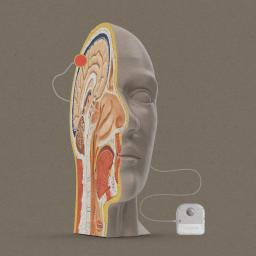 |
by Rhiannon Williams on (#6M6RT)
This is today's edition ofThe Download,our weekday newsletter that provides a daily dose of what's going on in the world of technology. Beyond Neuralink: Meet the other companies developing brain-computer interfaces In the world of brain-computer interfaces, it can seem as if one company sucks up all the oxygen in the room. Last month, Neuralink...
|
 |
by Cassandra Willyard on (#6M6PV)
This article first appeared in The Checkup,MIT Technology Review'sweekly biotech newsletter. To receive it in your inbox every Thursday, and read articles like this first,sign up here. In the world of brain-computer interfaces, it can seem as if one company sucks up all the oxygen in the room. Last month, Neuralink posted a video to...
|
 |
by Taylor Majewski on (#6M6MY)
Every Friday, Instagram chief Adam Mosseri speaks to the people. He has made a habit of hosting weekly ask me anything" sessions on Instagram, in which followers send him questions about the app, its parent company Meta, and his own (extremely public-facing) job. When I started watching these AMA videos years ago, I liked them....
|
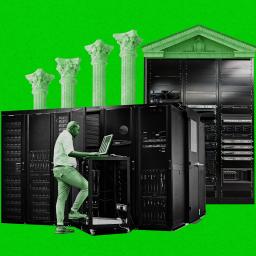 |
by Ylli Bajraktari, Tom Mitchell, and Daniela Rus on (#6M6MZ)
The ongoing revolution in artificial intelligence has the potential to dramatically improve our lives-from the way we work to what we do to stay healthy. Yet ensuring that America and other democracies can help shape the trajectory of this technology requires going beyond the tech development taking place at private companies. Research at universities drove...
|
 |
by Rhiannon Williams on (#6M5X2)
This is today's edition ofThe Download,our weekday newsletter that provides a daily dose of what's going on in the world of technology Hydrogen trains could revolutionize how Americans get around Like a mirage speeding across the dusty desert outside Pueblo, Colorado, the first hydrogen-fuel-cell passenger train in the United States is getting warmed up on...
|
 |
by Casey Crownhart on (#6M5QN)
This article is from The Spark, MIT Technology Review's weekly climate newsletter. To receive it in your inbox every Wednesday, sign up here. The votes have been tallied, and the results are in. The winner of the 11th Breakthrough Technology, 2024 edition, is ... drumroll please ... thermal batteries! While the editors of MIT Technology...
|
 |
by Benjamin Schneider on (#6M5NE)
Like a mirage speeding across the dusty desert outside Pueblo, Colorado, the first hydrogen-fuel-cell passenger train in the United States is getting warmed up on its test track. Made by the Swiss manufacturer Stadler and known as the FLIRT (for Fast Light Intercity and Regional Train"), it will soon be shipped to Southern California, where...
|
 |
by Rhiannon Williams on (#6M57Z)
We've all seen videos over the past few years demonstrating how agile humanoid robots have become, running and jumping with ease. We're no longer surprised by this kind of agility-in fact, we've grown to expect it. The problem is, these shiny demos lack real-world applications. When it comes to creating robots that are useful and...
|
 |
by Rhiannon Williams on (#6M4Y9)
This is today's edition ofThe Download,our weekday newsletter that provides a daily dose of what's going on in the world of technology The great commercial takeover of low-Earth orbit NASA designed the International Space Station to fly for 20 years. It has lasted six years longer than that, though it is showing its age, and...
|
 |
by Zeyi Yang on (#6M4S9)
This story first appeared in China Report, MIT Technology Review's newsletter about technology in China.Sign upto receive it in your inbox every Tuesday. I don't know about you, but I only learned last week that there's something connecting MSG and computer chips. Inside most laptop and data center chips today, there's a tiny component called...
|
 |
by David W. Brown on (#6M4QE)
Washington, DC, was hot and humid on June 23, 1993, but no one was sweating more than Daniel Goldin, the administrator of NASA. Standing outside the House chamber, he watched nervously as votes registered on the electronic tally board. The space station wasn't going to make it. The United States had spent more than $11...
|
 |
by Rhiannon Williams on (#6M40D)
This is today's edition ofThe Download,our weekday newsletter that provides a daily dose of what's going on in the world of technology AI was supposed to make police bodycams better. What happened? When police departments first started buying and deploying bodycams in the wake of the police killing of Michael Brown in Ferguson, Missouri, a...
|
 |
by Melissa Heikkilä on (#6M3V8)
This story originally appeared in The Algorithm, our weekly newsletter on AI. To get stories like this in your inbox first, sign up here. The holy grail of robotics since the field's beginning has been to build a robot that can do our housework. But for a long time, that has just been a dream....
|
 |
by Patrick Sisson on (#6M3V9)
On July 25 last year, in circuit court in Dane County, Wisconsin, a motion was filed to dismiss a criminal case as a result of what defense attorneys described as institutional bad-faith actions" by a local police department. The evidence was unearthed, in part, because of artificial intelligence. Attorney Jessa Nicholson Goetz had been preparing...
|
 |
by Rhiannon Williams on (#6M33D)
This is today's edition ofThe Download,our weekday newsletter that provides a daily dose of what's going on in the world of technology. How to stop a state from sinking In a 10-month span between 2020 and 2021, southwest Louisiana saw five climate-related disasters, including two destructive hurricanes. As if that wasn't bad enough, more storms...
|
 |
by Casey Crownhart on (#6M30K)
We need heat to make everything from steel bars to ketchup packets. Today, a whopping 20% of global energy demand goes to producing heat used in industry, and most of that heat is generated by burning fossil fuels. In an effort to clean up industry, a growing number of companies are working to supply that...
|
 |
by Xander Peters on (#6M2YA)
There is more than one way to raise a house. Many of the mobile homes, Creole cottages, and other dwellings that have been flagged for flood risk along Louisiana's low-lying coastline can be separated from their foundations and slowly raised into the sky on hydraulic jacks. While a home is held aloft by temporary support...
|
 |
by Rhiannon Williams on (#6M1BC)
This is today's edition ofThe Download,our weekday newsletter that provides a daily dose of what's going on in the world of technology A brief, weird history of brainwashing On a spring day in 1959, war correspondent Edward Hunter testified before a US Senate subcommittee investigating the effect of Red China Communes on the United States."...
|
 |
by Cassandra Willyard on (#6M19E)
This article first appeared in The Checkup,MIT Technology Review'sweekly biotech newsletter. To receive it in your inbox every Thursday, and read articles like this first,sign up here. CAR-T therapies, created by engineering a patient's own cells to fight cancer, are typically reserved for people who have exhausted other treatment options. But last week, the FDA...
|
 |
by Annalee Newitz on (#6M172)
On an early spring day in 1959, Edward Hunter testified before a US Senate subcommittee investigating the effect of Red China Communes on the United States." It was the kind of opportunity he relished. A war correspondent who had spent considerable time in Asia, Hunter had achieved brief media stardom in 1951 after his book...
|
 |
by James O'Donnell on (#6M0QF)
It can be dizzying to try to understand all the complex components of a single computer chip: layers of microscopic components linked to one another through highways of copper wires, some barely wider than a few strands of DNA. Nestled between those wires is an insulating material called a dielectric, ensuring that the wires don't...
|
 |
by Grant Gillary on (#6M0GS)
Traditionally, moving up in an organization has meant leading increasingly large teams of people, with all the business and operational duties that entails. As a leader of large teams, your contributions can become less about your own work and more about your team's output and impact. There's another path, though. The rapidly evolving fields of...
|
 |
by Rhiannon Williams on (#6M0EB)
This is today's edition ofThe Download,our weekday newsletter that provides a daily dose of what's going on in the world of technology. Is robotics about to have its own ChatGPT moment? Henry and Jane Evans are used to awkward houseguests. For more than a decade, the couple, who live in Los Altos Hills, California, have...
|